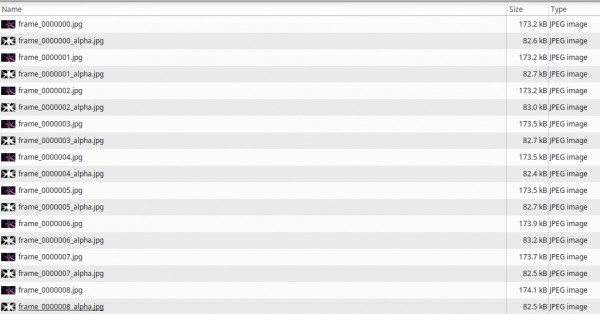Problem. I'm using software that outputs many JPGs and alpha JPGs like this:

Using this ImageMagick command I can combine the 2 JPGs into a 1 transparent PNG:
composite -compose copy_opacity frame_0000000_alpha.jpg frame_0000000.jpg 0000000.png
That works perfectly but I want to do hundreds or thousands of PNGs.
I tried this:
composite -compose copy_opacity frame_*_alpha.jpg frame_*.jpg *.png
It looks like the output filename doesn't work. Does anyone know how to convert these combined JPGs to PNG's?
Is there another Open Source method to achieve this?
Using this ImageMagick command I can combine the 2 JPGs into a 1 transparent PNG:
composite -compose copy_opacity frame_0000000_alpha.jpg frame_0000000.jpg 0000000.png
That works perfectly but I want to do hundreds or thousands of PNGs.
I tried this:
composite -compose copy_opacity frame_*_alpha.jpg frame_*.jpg *.png
It looks like the output filename doesn't work. Does anyone know how to convert these combined JPGs to PNG's?
Is there another Open Source method to achieve this?







